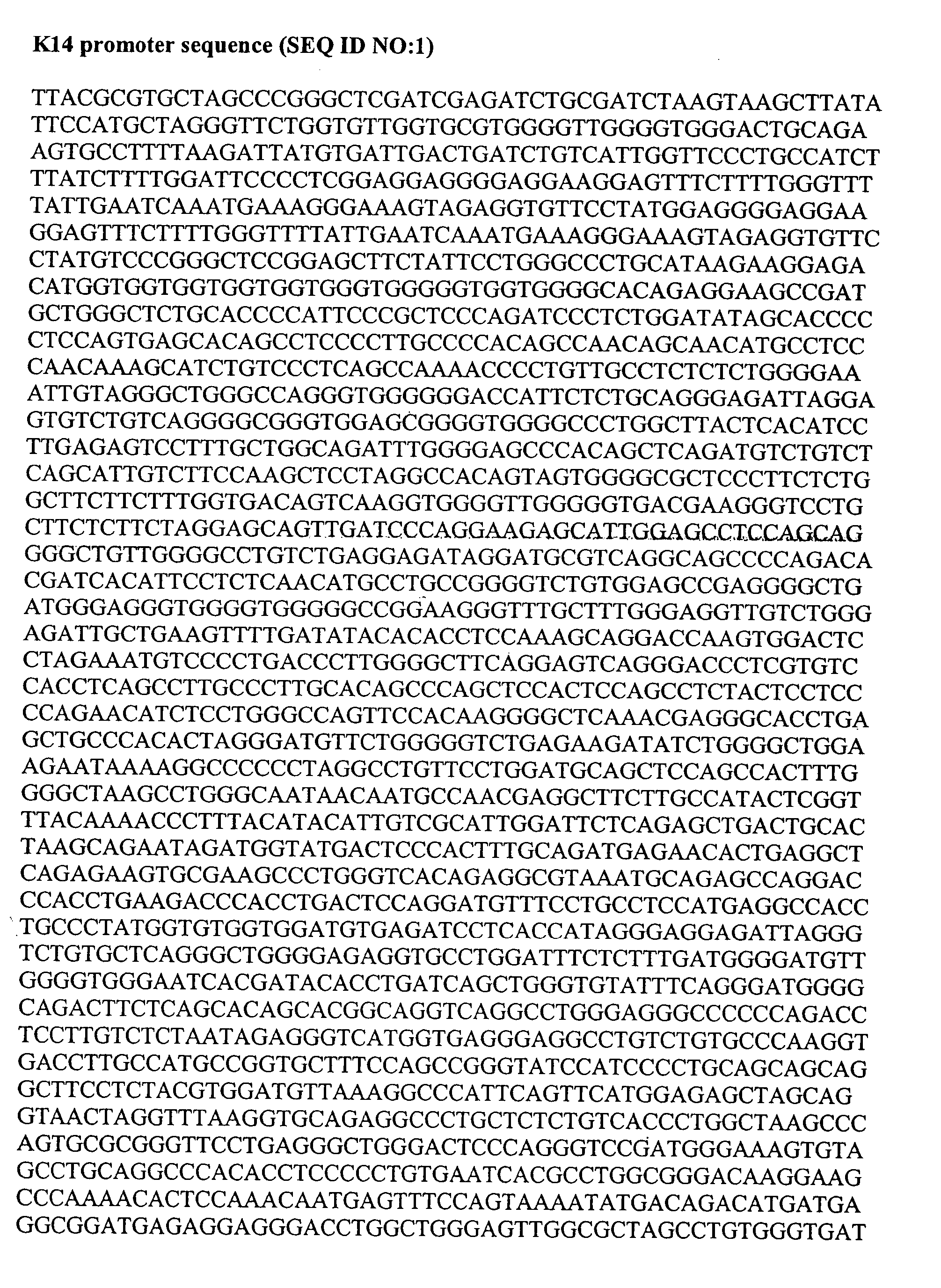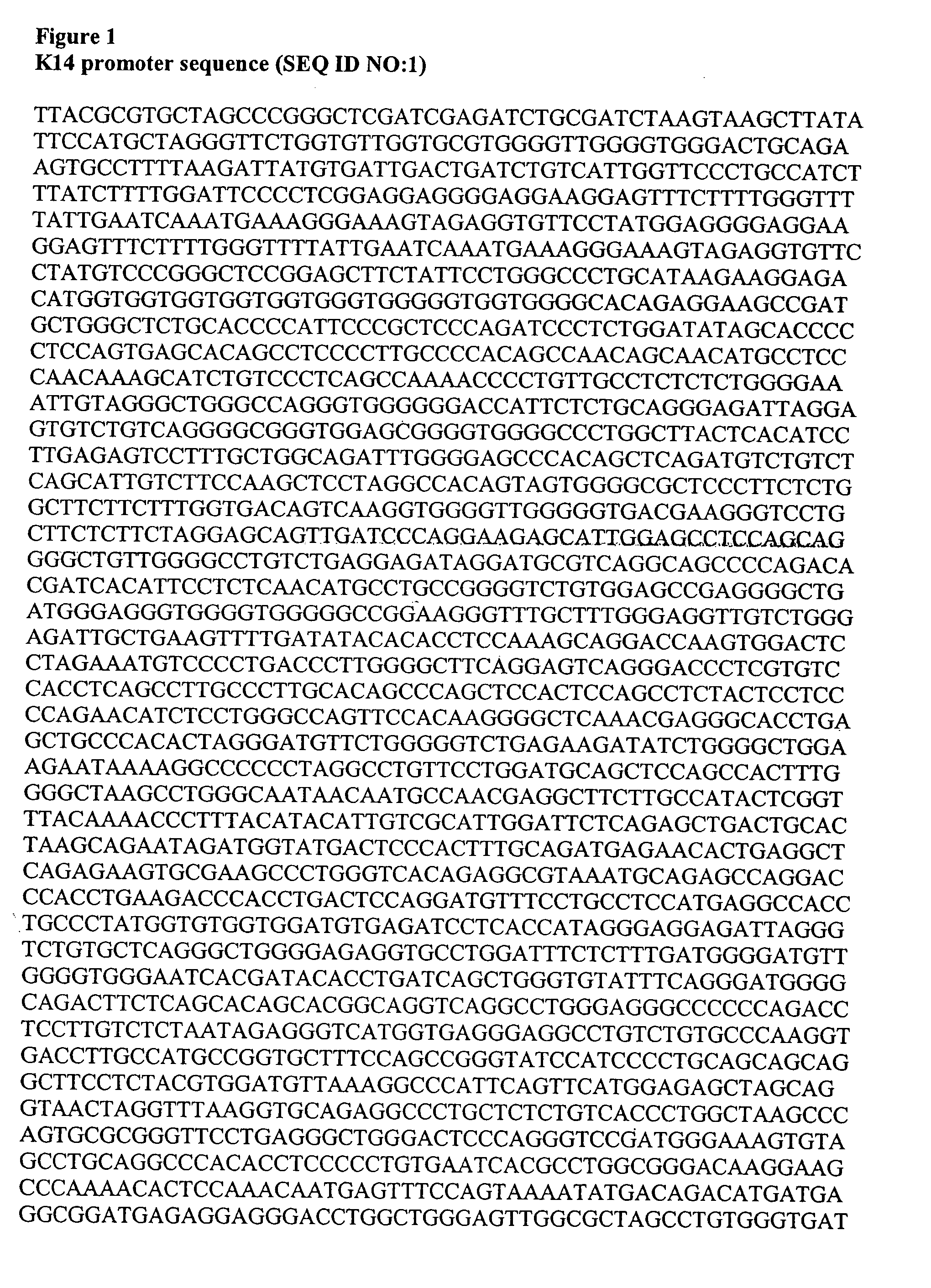Vectors for stable gene expression
a gene expression and vector technology, applied in the field of vectors for stable gene expression, can solve the problems of difficult reproducible integration of transgenes at a particular locus of interest, system suffers from significant shortcoming, and clonal variation
- Summary
- Abstract
- Description
- Claims
- Application Information
AI Technical Summary
Problems solved by technology
Method used
Image
Examples
example 1
Isolation of HS4 Insulator Element, attB Integration Site, and C31 Integrase
[0093] A DNA fragment containing the 250 bp “core” of the HS4 insulator element was amplified by PCR from chicken genomic DNA using primers designed to published HS4 sequences (see, e.g., Chung, J. H., et al., Proc Natl Acad Sci USA, 1997, 94(2): 575-80). This DNA fragment was cloned into the pCR2.1 vector and sequenced to verify its identity and integrity. The HS4 core element was identical to previously published sequences. The HS4 core element was excised from the pCR2.1 vector with EcoRV and multimerized by ligating the 250 bp HS4 monomer overnight and gel-purifying and cloning 500 bp DNA fragments corresponding to HS4 dimers. Plasmids containing HS4 dimers in directly repeated orientation were identified by restriction analysis and DNA sequencing. Dimerized HS4 core elements were termed 2XHS4.
[0094] A 285 bp DNA fragment containing the attB integration target sequence was isolated from S. lividans gen...
example 2
Assembly of Insulator / Targeted Integration Cassettes
[0096] Cassettes containing the attB integration element flanked by dimerized HS4 elements were assembled in a two-step cloning strategy. First, the 2XHS4 element was cloned into the NotI site of pCR2.1 vectors containing either the 53 bp minimal attB element or the 285 bp attB element described in Example 1. After screening for insert orientation by restriction analysis and DNA sequencing, a second copy of the 2XHS4 element was cloned into the BamHI site of plasmids containing one copy of the 2XHS4 element and either the 53 bp or 285 bp attB elements. Clones that contained copies of the 2XHS4 element in direct orientation were identified by restriction analysis and confirmed by DNA sequencing.
[0097] The insulator / attB cassettes were cloned into expression vectors containing the coding region for VEGF165.
example 3
Isolation of Stably-Transfected Cells
[0098] Stable cell clones with randomly-integrated expression constructs were isolated by transfecting NIKS keratinocytes with a K14-VEGF expression vector lacking the insulator / attB cassette. Stable cell clones that integrated via the attB element were isolated by co-transfecting NIKS keratinocytes with a K14-VEGF expression vector containing the insulator / attB cassette and an expression vector containing the C31 integrase under control of the K14 promoter. In both cases, transfected cells were grown in the presence of blasticidin for three weeks to select for clones that had stably incorporated the K14-VEGF expression constructs. Independent clones were isolated, expanded, and stored in liquid nitrogen as glycerol stocks.
PUM
| Property | Measurement | Unit |
|---|---|---|
| insulator | aaaaa | aaaaa |
| frequency | aaaaa | aaaaa |
| length | aaaaa | aaaaa |
Abstract
Description
Claims
Application Information
 Login to View More
Login to View More - R&D
- Intellectual Property
- Life Sciences
- Materials
- Tech Scout
- Unparalleled Data Quality
- Higher Quality Content
- 60% Fewer Hallucinations
Browse by: Latest US Patents, China's latest patents, Technical Efficacy Thesaurus, Application Domain, Technology Topic, Popular Technical Reports.
© 2025 PatSnap. All rights reserved.Legal|Privacy policy|Modern Slavery Act Transparency Statement|Sitemap|About US| Contact US: help@patsnap.com



